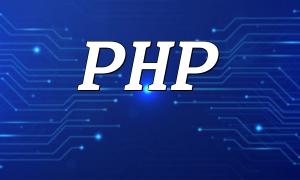With growing website traffic, performance optimization has become critical for improving user experience. PHP, as a mainstream server-side scripting language, directly affects the speed of dynamic content generation. This article shares practical PHP-FPM optimization methods to help developers enhance website performance, along with concrete code examples for reference.
Increase PHP-FPM worker processes: Adding more worker processes fully utilizes server resources and improves PHP concurrency. In the PHP-FPM configuration file, modify the pm.max_children parameter, e.g., pm.max_children = 50.
Adjust process management mode: By default, PHP-FPM uses static mode, where each process handles a fixed number of requests. Depending on the workload, dynamic or ondemand modes can be used. Dynamic mode adjusts the number of processes according to request volume, while ondemand starts or stops processes based on actual requests. Set this via the pm parameter, e.g., pm = dynamic or pm = ondemand.
Set request timeout: Prevent processes from occupying resources for too long by configuring request_terminate_timeout, e.g., 30 seconds.
Use caching mechanisms: Reduce repeated database queries and file operations by storing frequently accessed data in cache to improve processing speed. You can use Memcached, Redis, or PHP's built-in caching. Example:
<?php
$memcached = new Memcached();
$memcached->addServer('localhost', 11211);
$key = 'cache_key';
$data = $memcached->get($key);
if (!$data) {
$data = // Fetch data from database or file
$memcached->set($key, $data, 3600); // Cache for 1 hour
}
// Use $data for further operations
?>Enable Gzip compression: Reduce content size for faster loading by enabling zlib.output_compression, e.g., zlib.output_compression = On.
Optimize database access: Database queries are often performance bottlenecks. Improve efficiency by optimizing SQL, adding indexes, and minimizing data retrieval. Combine caching to reduce database I/O. Example using PDO prepared statements:
<?php
$pdo = new PDO('mysql:host=localhost;dbname=test', 'username', 'password');
$statement = $pdo->prepare('SELECT * FROM table WHERE id = :id');
$statement->bindParam(':id', $id);
$statement->execute();
$result = $statement->fetchAll();
// Use $result for further operations
?>Minimize file read/write operations: Store dynamically generated content in static files and serve them directly via the web server to reduce PHP workload.
This article outlined PHP-FPM optimization methods to speed up dynamic content generation, including configuration tuning, code optimization, caching strategies, and database optimization techniques. Applying these methods appropriately can significantly improve website performance and user experience. However, optimization strategies should be chosen based on the actual website scenario to avoid over-optimization and potential issues. Implementing these techniques allows developers to boost website response speed and system stability effectively.








